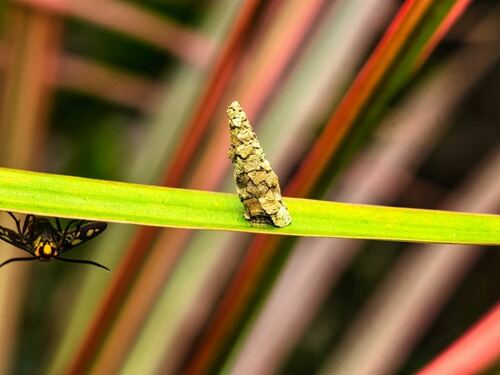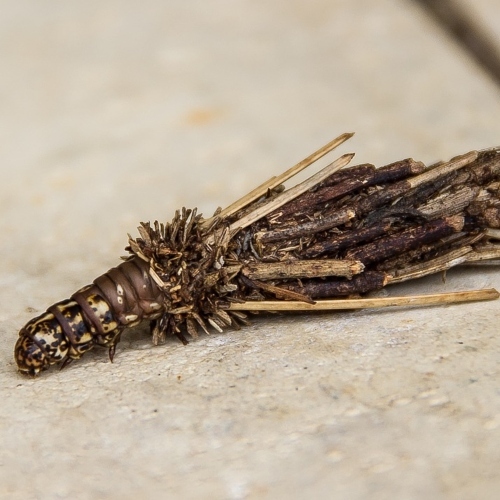Bagworms: The Silent Tree Destroyers—A Comprehensive Guide
Introduction
As a property owner, protecting your trees from pests is crucial for maintaining a healthy and beautiful landscape. Among the most destructive yet often overlooked tree pests are bagworms. These seemingly innocuous creatures can cause significant damage to a wide variety of trees, particularly evergreens. In this comprehensive guide, we’ll explore what bagworms are, the damage they can cause, and how to effectively manage and prevent infestations.
Understanding Bagworms: Nature’s Deceptive Architects
A Bagworm Caterpillar Wrapped in a Protective Case – Image by sandid on Pixabay
What are Bagworms?
Bagworms are a species of moth that get their name from the distinctive bag-like structures they create as larvae. Here are key facts about these pests:
- Alternative Names: Also known as “caseworms” or “bagmoths”
- Life Stage: Most destructive in their caterpillar (larval) stage
- Habitat: Protective cases constructed from environmental materials
- Size: Cases range from 1 cm to 15 cm in length
- Distribution: Native to North America, predominantly on the East Coast
The Bagworm Life Cycle
Understanding the bagworm life cycle is crucial for effective control:
1. Egg Stage:
- Females lay up to 1,000 eggs during autumn
- Eggs overwinter in the bags
2. Larval Stage (Spring to Early Fall):
- Eggs hatch in late spring or early summer
- Tiny black larvae emerge and begin constructing new bags
- Larvae feed on trees throughout summer
3. Adult Stage (Early Fall):
- Adult males emerge with well-developed wings and feathery antennae
- Females remain in their bags, often wingless
- Males live briefly to mate, lacking functional mouthparts
4. Reproduction :
- Mating occurs in early fall
- Females lay eggs in their bags, starting the cycle anew
During the autumn season, the bagworms use their bag to fill with eggs—up to one thousand of their eggs will fit in one bag.
The Devastating Impact of Bagworms on Trees

A Bagworm Attached to a Leaf with a Moth Below
Vulnerable Tree Species
Bagworms can infest over one hundred different tree species, but they show a particular preference for:
1. Evergreens (primary targets)
- Spruce
- Cedar
- Juniper
- Arborvitae
2. Deciduous trees (secondary targets)
- Maple
- Elm
- Sycamore
Types of Damage
Bagworms can cause severe damage to trees in several ways:
1. Defoliation:
- Larvae feed voraciously on leaves, needles, and buds
- Severe infestations can completely defoliate a tree
2. Growth Stunting:
- Continued feeding reduces a tree’s ability to photosynthesize
- Results in stunted growth and weakened overall health
3. Branch Decay:
- Silk used to attach bags can girdle branches
- Leads to branch dieback and potential entry points for diseases
4. Tree Death:
- Severe, repeated infestations can kill trees, especially evergreens
Effective Bagworm Management Strategies
Controlling bagworms requires a multifaceted approach. Here are several strategies to manage and prevent infestations:
A Bagworm Enclosed in Its Feathery Cocoon – Image by WikimediaImages on Pixabay
1. Manual Removal
The most environmentally friendly and effective method for small infestations:
- Timing: Best done in fall through early spring before eggs hatch
- Technique: Hand-pick bags and destroy them
- Disposal: Submerge bags in soapy water or burn them (where permitted)
Biological Control
Leveraging natural predators and eco-friendly solutions:
- Beneficial Insects: Encourage natural predators like birds, wasps, and predatory bugs
- Bacillus thuringiensis (Bt): A naturally occurring bacteria effective against young larvae
- Timing: Apply Bt in late spring when larvae are small and actively feeding
3. Chemical Control
For severe infestations, insecticides may be necessary:
- Options: Carbaryl, malathion, or pyrethroids
- Application: Spray foliage thoroughly, including the interior leaves of the tree
- Timing: Most effective when larvae are young and actively feeding (late spring to early summer)
4. Cultural Practices
Preventive measures to discourage bagworm infestations:
- Regular Inspection: Monitor trees frequently, especially evergreens
- Proper Tree Care: Maintain tree health through proper watering, fertilization, and pruning
- Diversity in Planting: Mix tree species in your landscape to reduce the spread of infestations
When to Call a Professional Arborist
While many bagworm infestations can be managed by homeowners, there are situations where professional help is advisable:
- Severe or widespread infestations
- Large or mature trees that are difficult to treat
- When multiple tree species are affected
- If you’re unsure about proper pesticide application
For those in the San Francisco Bay Area, Arborist Now offers expert tree care services , including bagworm control. Our certified arborists can:
- Accurately identify bagworm infestations
- Assess the extent of damage to your trees
- Develop a customized treatment plan
- Implement effective control measures
- Provide ongoing monitoring and preventive care
Conclusion: Protecting Your Trees from Bagworms
Bagworms may be small, but their impact on trees can be devastating. By understanding these pests and implementing proactive management strategies, you can protect your valuable trees from damage and maintain a healthy, beautiful landscape. Remember, early detection and prompt action are key to controlling bagworm infestations effectively.
Don’t let bagworms silently destroy your trees. Contact Arborist Now today to take action against these pests for the long-term health of your trees and the beauty of your property.
Originally posted on September 06, 2019




